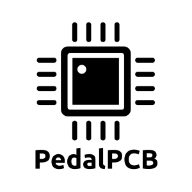BuddytheReow
Moderator
I've got a transistor tester coming in the mail in a few days. Can someone explain to me or at least point me in the right direction what to look for when testing? On top of that can someone give me a breakdown of what I should be looking for in the various datasheets and why those are important for circuit design/building? I thought posting it here in the Test Kitchen would be beneficial for others as well.
Chuck's got a few good articles on some of these specs so it's a start.
 forum.pedalpcb.com
forum.pedalpcb.com
 forum.pedalpcb.com
forum.pedalpcb.com
 forum.pedalpcb.com
forum.pedalpcb.com
 forum.pedalpcb.com
forum.pedalpcb.com
 forum.pedalpcb.com
forum.pedalpcb.com
 forum.pedalpcb.com
forum.pedalpcb.com
Chuck's got a few good articles on some of these specs so it's a start.
What's All This hFE Stuff About?
We see lots of discussion here and on other forums regarding hFE, but I get the feeling that many of us don't really know what it means or why it's important. First, a little background. Bipolar transistors are current-mode devices. We have to supply base current to get collector current...
Another Way to Measure Transistor Gain
We've talked about hfe, which represents current gain, but there is another way to measure gain in a transistor. Some devices, like vacuum tubes or FETS, don't draw any input current, so the concept of current gain makes no sense. For those devices, engineers use the term "tranconductance,"...
JFET Biasing - part 1
I spent a fair amount of time trying to make this as concise and readable as I could. Intro In theory, setting the bias on JFETs should be easy. In practice, not so much. Here are the details on why that is and what we can do about it. Let's review some theory and get the math out of the...
Biasing BJTs - part 1
There's a lot to cover, so I'll break this up into parts. This discussion will focus on the DC operating point of the transistor. First, some basics. Many of you will already know this stuff. Vbe is the base-emitter junction voltage. It's around 0.6V with silicon and around 0.15V with...
Biasing BJTs - part 2
Before I go any further, let's talk about negative feedback. People don't always like negative feedback in their personal lives, but we absolutely depend on it in electronics. Stephen S. Black is credited with discovering the negative feedback amplifier in 1927 while working at Bell Labs. The...
Biasing BJTs - part 3
This time we'll focus on the Fuzz Face. The Fuzz Face has a long and colorful history that is beyond the scope of this discussion. The original FFs were built with PNP Germanium transistors because that's what the pedal builders had to work with. In this discussion, I'll talk about NPN...
